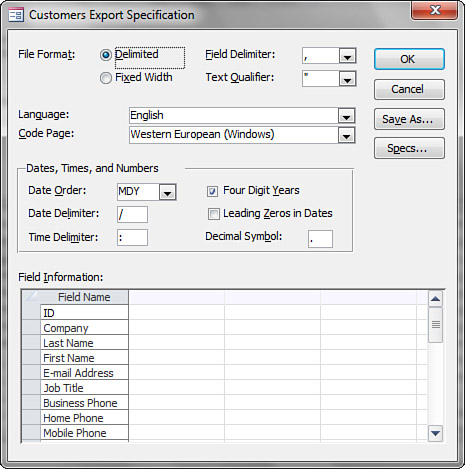If you select Delimited and then click Advanced, the Text Export Specification dialog box appears (see
Figure 5).
Here you can designate the field delimiter, text qualifier, language,
date order, and other specifics about the file you are exporting. You
will modify these options to meet the specifications of the consumer of
the file you are creating.
